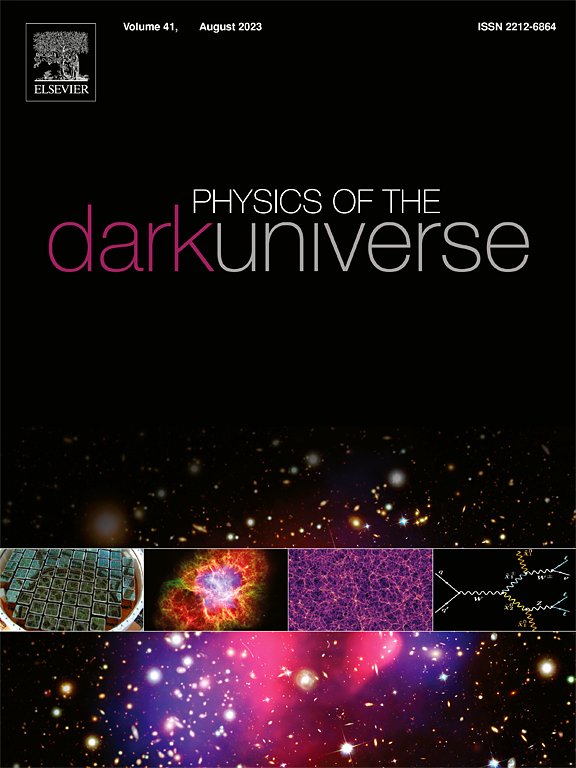Epicyclic oscillations around slowly rotating charged black hole in Bumblebee gravity
IF 5
2区 物理与天体物理
Q1 ASTRONOMY & ASTROPHYSICS
引用次数: 0
Abstract
We investigate the behavior of test particles orbiting a slowly rotating, axially symmetric, charged black hole within the context of Bumblebee gravity theory, with an emphasis on how the parameters of the model impact particle dynamics. This black hole solution is defined by four primary parameters: the mass , the spin parameter , the charge , and the Lorentz-violating parameter . We give analytical expressions for the radial profiles of specific energy and specific angular momentum associated with stable circular orbits in the equatorial plane. Also, we utilize the effective potential method to analyze the stability of these orbits and the forces acting on the particles. We compute and discuss the radial and latitudinal harmonic oscillation frequencies where the parameters are the mass , charge , parameter , and the Lorentz-violating parameter . We also explore the key characteristics of quasi-periodic oscillations of test particles near stable circular orbits, especially in the equatorial plane. Moreover, we investigate precession effects, including periastron precession and the Lense-Thirring effect. Our results indicate that the motion of particles around the black hole is notably affected by the parameters of the model.
求助全文
约1分钟内获得全文
求助全文
来源期刊

Physics of the Dark Universe
ASTRONOMY & ASTROPHYSICS-
CiteScore
9.60
自引率
7.30%
发文量
118
审稿时长
61 days
期刊介绍:
Physics of the Dark Universe is an innovative online-only journal that offers rapid publication of peer-reviewed, original research articles considered of high scientific impact.
The journal is focused on the understanding of Dark Matter, Dark Energy, Early Universe, gravitational waves and neutrinos, covering all theoretical, experimental and phenomenological aspects.
 求助内容:
求助内容: 应助结果提醒方式:
应助结果提醒方式:


